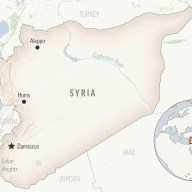After a week in Rome, I wonder what Toronto can learn from the eternal city.
The streets here are filled with people, yet apart from churches and monuments, there are no structures higher than five or six storeys. This is a city without highrises. Buildings are so compact that densities are very high, and that density feeds the vibrant street life.
Most shops are tiny by North American standards. The place where we buy fruits and vegetables, including succulent blood oranges, is no larger than a closet. Our local “supermarket” is a rabbit warren of small spaces, altogether the size of the average corner store in Toronto.
Toronto could use more compact density, not of the highrise variety, but low- to medium-rise. The streets would be more active and city life much more pleasant.
There are so many layers of history here. Just outside the stylish Piazza Navona one finds the remnants of the wall that Roman emperor Domitian built in the first century after Christ as a sports field. Gaudy, gigantic St. Peter’s Basilica, brimming with tourists as the Catholic Church muddles through its sins, can trace its historic roots back 2,000 years to a grave excavated several decades ago right under the dome. The layers of historical artifacts have wreaked havoc during the construction of the subway system.
Toronto can’t compete with that kind of historical layering, but we could be more serious about protecting and respecting the limited amount of history we do have, so something might be around in 200 years, let alone 2,000 years.
Rome can also learn from Toronto. Here, too many buildings are covered with graffiti for the first three metres above grade. The exterior of some subway cars is all graffiti. It makes the city feel unkempt and its public space uncared for. Toronto building owners know the merits of wiping graffiti away as soon as it appears.
That’s one kind of historical record that’s not worth preserving.
















